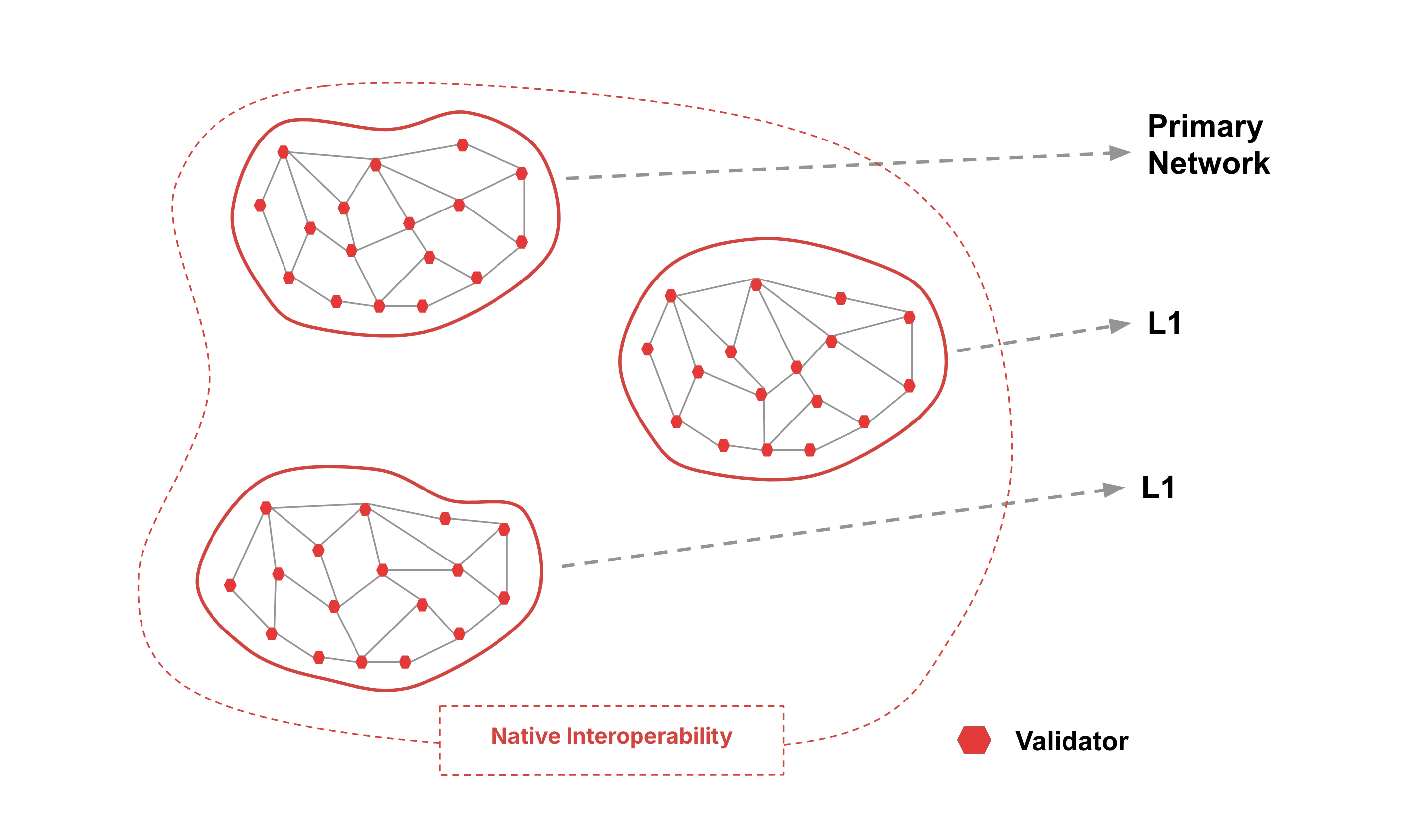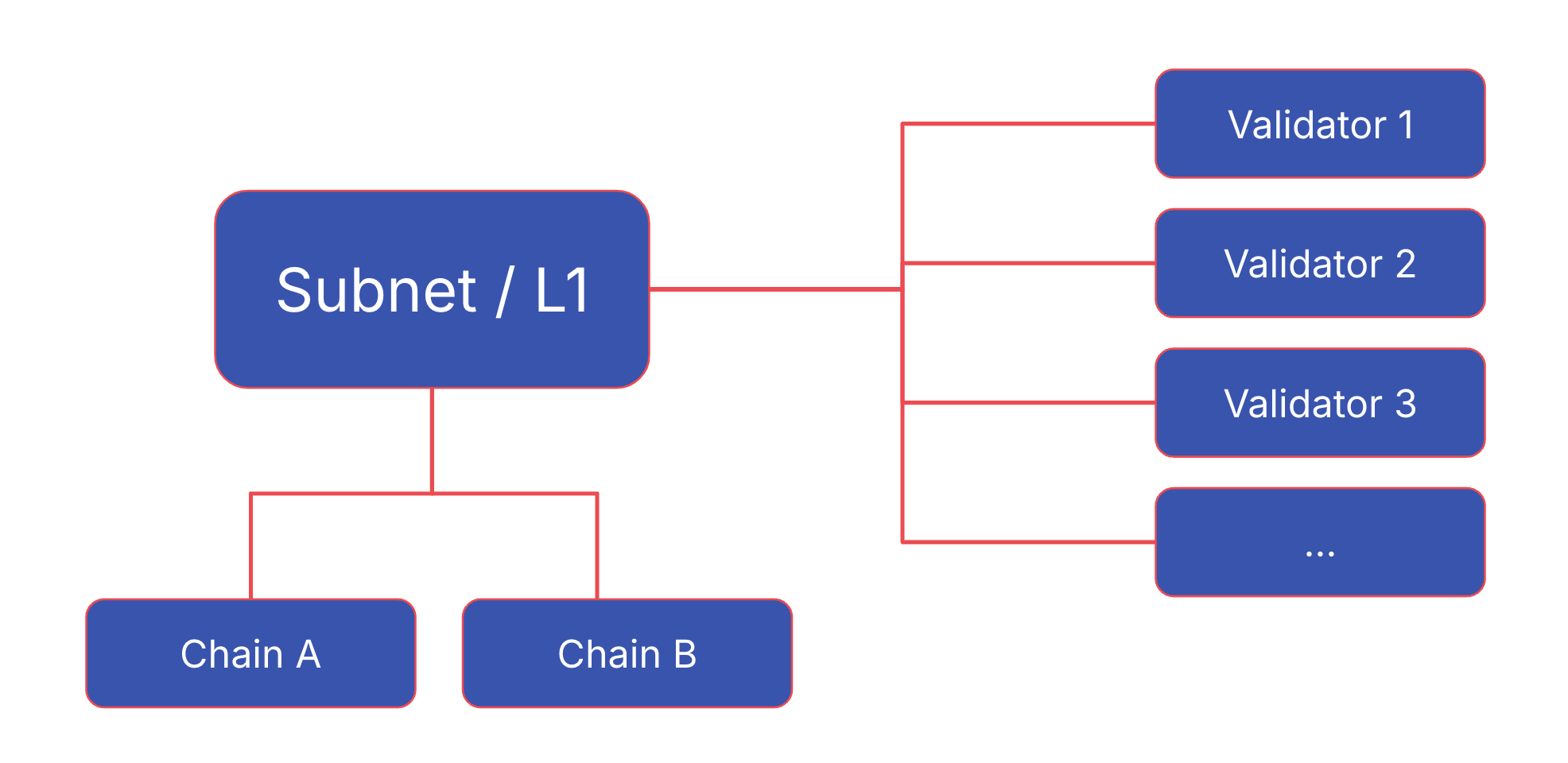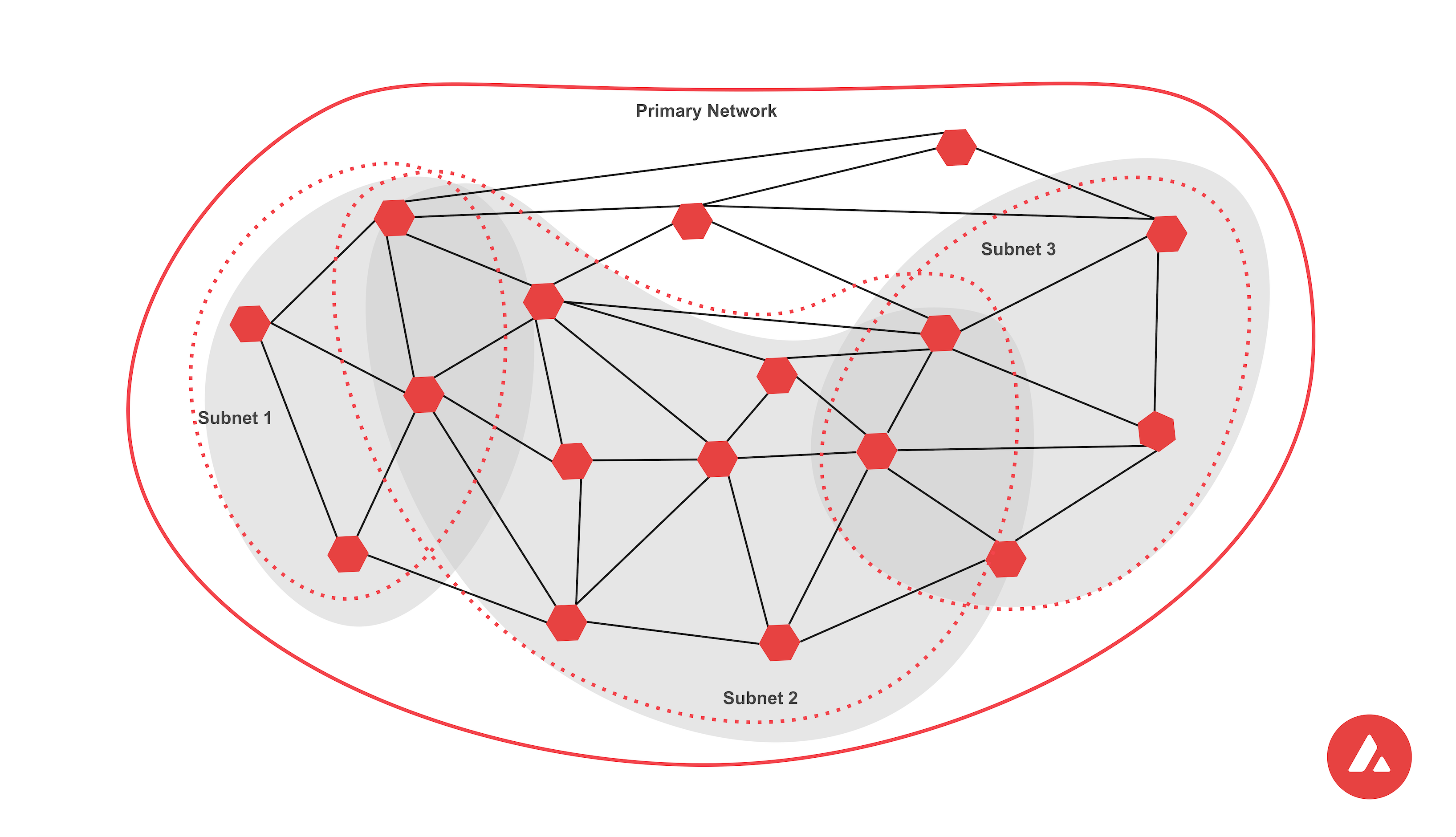Network Architecture
Learn about the network architecture of Avalanche and the role of the P-Chain.
To create an L1 you need to follow these steps:
- Create a Subnet record on the P-Chain with the
CreateSubnettransaction - Add one or more chains to the Subnet with the
CreateChaintransaction - Convert the Subnet to an L1 and add the initial validators with the
ConvertSubnetToL1transaction
Let's dive into what that means:
Validators in a Multi-Chain Network
Validators are nodes of a blockchain that secure the network by validating the transactions.
Each L1 in the Avalanche network has it's own set of validators that is running the AvalancheGo client.

Platform Chain
The Platform Chain is the backbone for the native interoperability of the Avalanche network. It is a registry of all validators in the Avalanche network. This includes the validators of the Primary Network (including the C- and P-Chain), as well as all L1s and legacy Subnet validators. For each validator the P-Chain stores the following information:
- A unique node ID identifying the validator
- A BLS Public Key
- The Stake Weight
- The Balance of the Validator for the continous interoperability fee
following graphic shows a simplified data model of the P-Chain:

Builders can create new L1 blockchains in the Avalanche Network by issuing transactions on the
P-Chain. The P-Chain runs a special-purpose virtual machine called the
platformvm. It is not
EVM-based and therefore to interact with it you need a compatible wallet like Core wallet. Creating
new records for L1 blockchains on the P-Chain is done by issuing transactions like the CreateSubnetTx.
The P-Chain is secured by the Primary Network validators. L1 validators are syncing the P-Chain, meaning they always have the latest view of the validator set of all blockchains in the Avalanche network, but are not participating in the consensus of the P-Chain.
Subnets
When the Avalanche network was created the architecture included the concepts of Subnets. Subnets
are blockchains that were validated by a subset of the Primary Network validators. Each Primary
Network validator can be a member of multiple subnets, and each Subnet can have multiple validators.
Since Primary network validators have to fullfil the Primary Network staking requirements of
2,000 AVAX, this was also necessary for every validator that was validating a Subnet. There was no
option to opt-out of validating the Primary Network.

While the concept of Subnets is still supported in the Avalanche network, it is recommended to launch new blockchains as L1s to take advantage of the benefits outlined earlier. Since the naming of Subnets is deep enshrined in the Avalanche network, you will still see it sometimes in the code or the transaction names.
Is this guide helpful?

